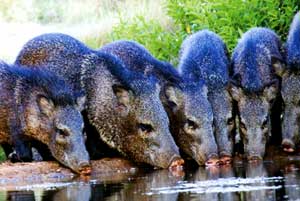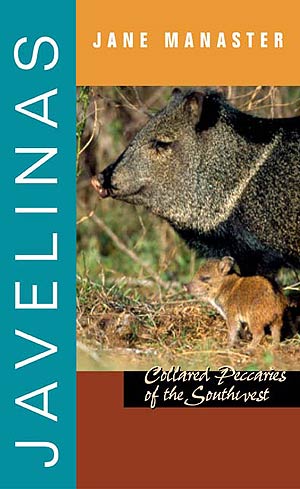Research/Academic Showcase
Texas Tech University
Link Between ADHD, Television Viewing Habits among Children Disputed
Trump's 'Apprentice' Benefits Mentor Tech Program
Texas Tech University Health Sciences Center
Task Force Addresses Consequences of Texas' Uninsured
STAR Brings New Hope for Women in Preventing Invasive Breast Cancer
Alumni Highlights
Nelnet's Loan Consolidation Program Could Save You Thousands
Development
New Law Scholarships Honor Legal Legends
Capital Campaign Focuses on Delivering New Facility for Rawls College of Business
Texas Tech's 'From Here, It's Possible' Contest Winners Announced
Athletics
Jones AT&T Stadium to Receive FieldTurf Surface for 2006 Season
Texas Tech University Press
New Book on the History and Mystery of the Collared Peccary
Helpful Links
New Book on the History and Mystery of the Collared Peccary
Jane Manaster's natural and cultural history of the javelina is a must-read for any fan of the little “pig” of the Southwest.
TTU Press
Of all of the stereotypically "Southwestern" animals, the javelina (or collared peccary) is probably the one that is least likely to be encountered by humans. Some people think they're just hairy wild pigs and some fear them as dangerous razorbacks. The truth is more complex and more interesting thanks to Jane Manaster's "Javelinas," a new book published by Texas Tech University Press.
 Javelinas, such as these shown in one of the beautiful pictures featured in Manaster's new book, are social and affectionate with one another and will render aid if one of the herd is attacked.
Javelinas, such as these shown in one of the beautiful pictures featured in Manaster's new book, are social and affectionate with one another and will render aid if one of the herd is attacked.The javelina is the only peccary species native to the United States and is as much a part of the Southwestern landscape as the roadrunner, armadillo and horned lizard. Its name is likely derived from the Spanish word for javelin, referring to the animal’s sharp tusks.
Javelinas are mentioned in documents dating back to the seventeenth century, when their range was somewhat larger. Very distantly related to the pig family, javelinas may be found in Texas, Arizona and New Mexico, where they feast on one of their favorite foods, the prickly pear cactus.
Living in herds numbering up to 50 animals, javelinas are generally said to be nearsighted and shy, although they are beginning to turn up as pests in some suburban areas. Due to a dorsal scent gland, you are likely to smell a javelina before you see it.
"Javelinas" features colorful and endearing photographs and illustrations of this misunderstood animal, making this natural and cultural history of the javelina a must-read for any fan of the little “pig” of the Southwest.
About the Author
Manaster, a freelance writer and geographer, has previously penned "Horned Lizards," which was published by Texas Tech University Press in 2002.
Visit the Texas Tech University Press Web site to learn more about "Javelinas."
